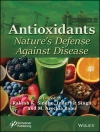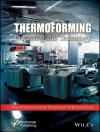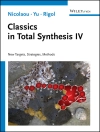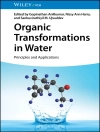How to synthesize native and modified proteins in the test tube
With contributions from a panel of experts representing a range of disciplines, Total Chemical Synthesis of Proteins presents a carefully curated collection of synthetic approaches and strategies for the total synthesis of native and modified proteins.
Comprehensive in scope, this important reference explores the three main chemoselective ligation methods for assembling unprotected peptide segments, including native chemical ligation (NCL). It includes information on synthetic strategies for the complex polypeptides that constitute glycoproteins, sulfoproteins, and membrane proteins, as well as their characterization. In addition, important areas of application for total protein synthesis are detailed, such as protein crystallography, protein engineering, and biomedical research. The authors also discuss the synthetic challenges that remain to be addressed. This unmatched resource:
- Contains valuable insights from the pioneers in the field of chemical protein synthesis
- Presents proven synthetic approaches for a range of protein families
- Explores key applications of precisely controlled protein synthesis, including novel diagnostics and therapeutics
Written for organic chemists, biochemists, biotechnologists, and molecular biologists, Total Chemical Synthesis of Proteins provides key knowledge for everyone venturing into the burgeoning field of protein design and synthetic biology.
Зміст
Preface xvii
1 Characterization of Protein Molecules Prepared by Total Chemical Synthesis 1
Stephen B. H. Kent
1.1 Introduction 1
1.2 Chemical Protein Synthesis 2
1.3 Comments on Characterization of Synthetic Protein Molecules 8
1.3.1 Homogeneity 8
1.3.2 Amino Acid Sequence 9
1.3.3 Chemical Analogues 10
1.3.4 Limitations of SPPS 10
1.3.5 Folding as a Purification Step 10
1.4 Summary 12
References 12
2 Automated Fast Flow Peptide Synthesis 17
Mark D. Simon, Alexander J. Mijalis, Kyle A. Totaro, Daniel Dunkelmann, Alexander A. Vinogradov, Chi Zhang, Yuta Maki, Justin M. Wolfe, Jessica Wilson, Andrei Loas, and Bradley L. Pentelute
2.1 Introduction 17
2.2 Results 19
2.2.1 Summary 19
2.2.1.1 Mechanical Principles 20
2.2.1.2 Chemical Principles 20
2.2.1.3 User Interface Principles 20
2.2.1.4 Data Analysis Method 20
2.2.1.5 Outcome 21
2.2.2 First-generation Automated Fast Flow Peptide Synthesis 21
2.2.2.1 Key Findings 21
2.2.2.2 Design of First-generation AFPS 21
2.2.2.3 Characterization of First-generation AFPS 23
2.2.3 Second-generation Automated Fast Flow Peptide Synthesis 24
2.2.3.1 Key Findings 24
2.2.3.2 Design of Second-generation AFPS 24
2.2.3.3 Characterization and Use of Second-generation AFPS 26
2.2.4 Third-generation Automated Fast Flow Peptide Synthesis 32
2.2.4.1 Key Findings 32
2.2.4.2 Design of Third-generation AFPS 34
2.2.4.3 Characterization of Third-generation AFPS 39
2.2.4.4 Reagent Stability Study 43
2.2.5 Fourth-generation Automated Fast Flow Peptide Synthesis 45
2.2.5.1 Key Findings 45
2.2.5.2 Effect of Solvent on Fast Flow Synthesis 45
2.2.5.3 Design and Characterization of Fourth-generation AFPS 45
2.3 Conclusions 49
Acknowledgments 53
References 53
3 N, S – and N, Se -Acyl Transfer Devices in Protein Synthesis 59
Vincent Diemer, Jennifer Bouchenna, Florent Kerdraon, Vangelis Agouridas, and Oleg Melnyk
3.1 Introduction 59
3.2 N, S- and N, Se-Acyl Transfer Devices: General Presentation, Reactivity and Statistical Overview of Their Utilization 61
3.2.1 General Presentation of N, S- and N, Se-Acyl Transfer Devices 61
3.2.2 Relative Reactivity of N, S- and N, Se-Acyl Transfer Devices 63
3.2.3 A Statistical Overview of the Synthetic Use of N, S- and N, Se-Acyl Transfer Devices for Protein Total Chemical Synthesis 64
3.3 Preparation of SEA/Se EAoff and SEAlide Peptides 68
3.3.1 Preparation of SEA and Se EA Peptides 68
3.3.2 Preparation of SEAlide Peptides 70
3.4 Redox-controlled Assembly of Biotinylated NK1 Domain of the Hepatocyte Growth Factor (HGF) Using SEA and Se EA Chemistries 71
3.5 The Total Chemical Synthesis of GM2-AP Using SEAlide-based Chemistry 75
3.6 Conclusion 79
References 80
4 Chemical Synthesis of Proteins Through Native Chemical Ligation of Peptide Hydrazides 87
Chao Zuo, Xiaodan Tan, Xianglong Tan, and Lei Liu
4.1 Introduction 87
4.2 Development of Peptide Hydrazide-based Native Chemical Ligation 88
4.2.1 Conversion of Peptide Hydrazide to Peptide Azide 88
4.2.2 Acyl Azide-based Solid-phase Peptide Synthesis 88
4.2.3 Acyl Azide-based Solution-phase Peptide Synthesis 89
4.2.4 The Transesterification of Acyl Azide 90
4.2.5 Development of Peptide Hydrazide-based Native Chemical Ligation 90
4.3 Optimization of Peptide Hydrazide-based Native Chemical Ligation 91
4.3.1 Preparation of Peptide Hydrazides 91
4.3.1.1 2-Cl-Trt-Cl Resin 91
4.3.1.2 Peptide Hydrazides from Expressed Proteins 92
4.3.1.3 Sortase-mediated Hydrazide Generation 93
4.3.2 Activation Methods of Peptide Hydrazide 94
4.3.2.1 Knorr Pyrazole Synthesis 94
4.3.2.2 Activation in TFA 94
4.3.3 Ligation Sites of Peptide Hydrazide 95
4.3.4 Multiple Fragment Ligation Based on Peptide Hydrazide 96
4.3.4.1 N-to-C Sequential Ligation 96
4.3.4.2 Convergent Ligation 96
4.3.4.3 One-pot Ligation 96
4.4 Application of Peptide Hydrazide-based Native Chemical Ligation 99
4.4.1 Peptide Drugs and Diagnostic Tools 99
4.4.1.1 Peptide Hydrazides for Cyclic Peptide Synthesis 99
4.4.1.2 Screening for D Peptide Inhibitors Targeting PD-L1 99
4.4.1.3 Chemical Synthesis of DCAF for Targeted Antibody Blocking 101
4.4.1.4 Peptide Toxins 101
4.4.2 Synthesis and Application of Two-photon Activatable Chemokine CCL5 102
4.4.3 Proteins with Posttranslational Modification 103
4.4.3.1 The Synthesis of Glycosylation-modified Full-length IL-6 103
4.4.3.2 The Chemical Synthesis of EPO 105
4.4.3.3 Chemical Synthesis of Homogeneous Phosphorylated p62 105
4.4.3.4 Chemical Synthesis of K19, K48 Bi-acetylated Atg3 Protein 105
4.4.4 Ubiquitin Chains 108
4.4.4.1 Synthesis of K27-linked Ubiquitin Chains 108
4.4.4.2 Synthesis of Atypical Ubiquitin Chains by Using an Isopeptide-linked Ub Isomer 109
4.4.4.3 Synthesis of Atypical Ubiquitin Chains Using an Isopeptide-linked Ub Isomer 109
4.4.5 Modified Nucleosomes 110
4.4.5.1 Synthesis of DNA-barcoded Modified Nucleosome Library 110
4.4.5.2 Synthesis of Modified Histone Analogs with a Cysteine Aminoethylation-assisted Chemical Ubiquitination Strategy 111
4.4.5.3 Synthesis of Ubiquitylated Histones for Examination of the Deubiquitination Specificity of USP51 111
4.4.6 Membrane Proteins 112
4.4.7 Mirror-image Biological Systems 112
4.5 Summary and Outlook 113
References 114
5 Expanding Native Chemical Ligation Methodology with Synthetic Amino Acid Derivatives 119
Emma E. Watson, Lara R. Malins, and Richard J. Payne
5.1 Native Chemical Ligation 120
5.2 Desulfurization Chemistries 120
5.3 Aspartic Acid (Asp, D) 122
5.4 Glutamic Acid (Glu, E) 124
5.5 Phenylalanine (Phe, F) 125
5.6 Isoleucine (Ile, I) 127
5.7 Lysine (Lys, K) 130
5.8 Leucine (Leu, L) 133
5.9 Asparagine (Asn, N) 135
5.10 Proline (Pro, P) 138
5.11 Glutamine (Gln, Q) 139
5.12 Arginine (Arg, R) 139
5.13 Threonine (Thr, T) 140
5.14 Valine (Val, V) 142
5.15 Tryptophan (Trp, W) 144
5.16 Application of Selenocysteine (Sec) to Ligation Chemistry 146
5.17 Aspartic Acid (Asp, D) 147
5.18 Glutamic Acid (Glu, E) 148
5.19 Phenylalanine (Phe, F) 149
5.20 Leucine (Leu, L) 151
5.21 Proline (Pro, P) 151
5.22 Serine (Ser, S) 153
References 155
6 Peptide Ligations at Sterically Demanding Sites 161
Yinglu Wang and Suwei Dong
6.1 Introduction 161
6.2 Ligations Using Thioesters 162
6.2.1 Exogenous Additive-promoted Ligations 162
6.2.2 Ligations Using Reactive Thioesters 167
6.2.3 Internal Activation Strategy in Peptide Ligations 169
6.3 Ligations Using Oxo-esters 170
6.4 Peptide Ligations Based on Selenoesters 170
6.5 Microfluidics-promoted NCL 175
6.6 Representative Applications in Protein Synthesis 178
6.7 Summary and Outlook 181
References 181
7 Controlling Segment Solubility in Large Protein Synthesis 185
Riley J. Giesler, James M. Fulcher, Michael T. Jacobsen, and Michael S. Kay
7.1 Solvent Manipulation 185
7.2 Isoacyl Strategy 187
7.3 Semipermanent Solubilizing Tags 191
7.3.1 N- or C-Terminal Solubilizing “Tails” 192
7.3.2 Reversible Backbone Modifications as Solubilizing Tags 194
7.3.3 Building Block Solubilizing Tags 195
7.3.4 Extendable Side-chain-based Solubilizing Tags 195
References 198
8 Toward HPLC-free Total Chemical Synthesis of Proteins 211
Phuc Ung and Oliver Seitz
8.1 Introduction 211
8.1.1 Capture and Release Purification 212
8.1.2 Solid-phase Chemical Ligations (SPCL) 212
8.2 Synthesis of Peptide Segments for Native Chemical Ligation 213
8.2.1 HPLC-free Preparation of N-terminal Peptide Segments for NCL 213
8.2.2 HPLC-free Preparation of C-terminal Peptide Segments for NCL 217
8.3 Synthesis of Proteins Using the His6 Tag 220
8.3.1 Reversible His6-based Capture Tags 220
8.3.2 His6-based Immobilization for C-to-N Assembly of Crambin 221
8.3.3 His6-based Immobilization for Assembly of Proteins on Microtiter Plates 222
8.3.4 His6 and Hydrazide Tags for Sequential N-to-C Capture and Release 225
8.4 Synthesis of Proteins via Oxime Formation 227
8.4.1 Reversible Oxime-based Capture Tags 227
8.4.2 Oxime-based Immobilization for N-to-C Solid-phase Chemical Ligations 227
8.4.3 Oxime-based Immobilization for C-to-N Solid-phase Chemical Ligations 233
8.4.4 Oxime-based C-to-N Solid-phase Chemical Ligations 237
8.5 Synthesis of Proteins via Hydrazone Formation 238
8.5.1 Reversible Hydrazone-based Capture Tags 238
8.5.2 Hydrazone-based Immobilization for Assembly of Proteins on Microtiter Plates 239
8.6 Synthesis of Proteins Using Click Chemistry 242
8.6.1 Click-based Immobilization for N-to-C Solid-phase Peptide Ligations Using a Protected Alkyne 242
8.6.2 Click-based Immobilization for N-to-C Solid-phase Peptide Ligations Using a Sea Group 243
8.7 Synthesis of Proteins Using the KAHA Ligation 244
8.7.1 The KAHA Ligation 244
8.7.2 HPLC-free Synthesis of Proteins Using the KAHA Ligation 245
8.8 Synthesis of Proteins Using Photocleavable Tags 246
8.8.1 Synthesis of Proteins Using a Photocleavable Biotin-based Purification Tag 246
8.8.2 Synthesis of Proteins Using a Photocleavable His6-based Purification Tag 247
8.9 Conclusion 249
References 251
9 Solid-phase Chemical Ligation 259
Skander A. Abboud, Agnès F. Delmas, and Vincent Aucagne
9.1 Introduction 259
9.1.1 The Promises of Solid Phase Chemical Ligation (SPCL) 259
9.1.2 Chemical Ligation Reactions Used for SPCL 260
9.1.3 Key Requirements for a SPCL Strategy 261
9.2 SPCL in the C-to-N Direction 262
9.2.1 Temporary Masking Groups to Enable Iterative Ligations 262
9.2.2 Linkers for C-to-N SPCL 264
9.2.2.1 Use of Same Linker and Solid Support for SPPS and SPCL 265
9.2.2.2 Re-immobilization of the C-Terminal Segment 266
9.3 SPCL in the N-to-C Direction 268
9.3.1 Temporary Masking Groups to Enable Iterative Ligations 268
9.3.2 Linkers for N-to-C SPCL 270
9.3.3 Case Study 272
9.3.4 SPCL with Concomitant Purifications 274
9.4 Post-Ligation Solid-Supported Transformations 274
9.4.1 Chemical Transformations 274
9.4.2 Biochemical Transformations 275
9.5 Solid Support 275
9.6 Conclusion and Perspectives 278
Acknowledgment 278
9.A Appendix 278
References 280
10 Ser/Thr Ligation for Protein Chemical Synthesis 285
Carina Hey Pui Cheung and Xuechen Li
10.1 Serine/Threonine Ligation 287
10.2 Epimerization Issue 289
10.3 Other Aryl Aldehyde Esters 289
10.4 Preparation of Peptide Salicylaldehyde Esters 289
10.5 Scope and Limitations 294
10.6 Strategies of Ser/Thr Ligation for Protein Chemical Synthesis 294
10.7 C-to-N Ser/Thr Ligation 294
10.8 N-to-C Ser/Thr Ligation 296
10.9 One-pot Ser/Thr Ligation and NCL 296
10.10 Bioconjugation 296
10.11 Solubility Issues 298
10.12 Extension of Ser/Thr Ligation 298
10.13 Conclusion 302
References 303
11 Protein Semisynthesis 307
Nam Chu and Philip A. Cole
11.1 Background 307
11.2 Expressed Protein Ligation (EPL) 308
11.2.1 Method Development 308
11.2.2 Applications of EPL for Studying Protein Posttranslational Modifications 309
11.2.3 Site-specific Protein Labeling with N-Hydroxysuccinimide Esters 311
11.3 Cysteine Modifications 311
11.3.1 Dehydroalanine Generation and Applications in Semisynthesis 312
11.3.2 Cysteine Alkylation-related Methods to Introduce Lys Mimics 313
11.4 Enzyme-catalyzed Protein/Peptide Ligations 314
11.4.1 Sortase 314
11.4.2 Butelase-1 316
11.4.3 Subtiligase 317
11.4.4 Trypsiligase 318
11.5 Enzyme-catalyzed Expressed Protein Ligation 318
11.6 Summary and Outlook 319
Acknowledgments 320
References 320
12 Bio-orthogonal Imine Chemistry in Chemical Protein Synthesis 327
Stijn M. Agten, Ingrid Dijkgraaf, Stan H. E. van der Beelen, and Tilman M. Hackeng
12.1 Introduction 327
12.2 Carbonyl Functionalization 328
12.3 Aminooxy, Hydrazine, and Hydrazide Functionalization 335
12.4 Oxime Ligation 337
12.5 Hydrazone Ligation 342
12.6 Pictet–Spengler Reaction 344
12.7 Catalysis of Oxime and Hydrazone Ligations 346
References 348
13 Deciphering Protein Folding Using Chemical Protein Synthesis 357
Vladimir Torbeev
13.1 Introduction 357
13.2 Modification of Protein Backbone Amides 358
13.3 Insertion of β-turn Mimetics 361
13.4 Inversion of Chiral Centers in Protein Backbone and Side Chains 362
13.5 Modulating cis–trans Proline Isomerization 366
13.6 Steering Oxidative Protein Folding 368
13.7 Covalent Tethering to Facilitate Folding of Designed Proteins 371
13.8 Discovery of Previously Unknown Protein Folds 373
13.9 Site-specific Labeling with Fluorophores 373
13.10 Foldamers and Foldamer–Peptide Hybrids 375
13.11 Conclusions and Outlook 377
Acknowledgement 378
References 378
14 Chemical Synthesis of Ubiquitinated Proteins for Biochemical Studies 383
Gandhesiri Satish, Ganga B. Vamisetti, and Ashraf Brik
14.1 The Ubiquitin System 383
14.2 Non-enzymatic Ubiquitination: Challenges and Opportunities 386
14.2.1 Chemical Synthesis of Ub Building Blocks 387
14.2.2 Isopeptide Ligation 387
14.2.3 Total Chemical Synthesis of Tetra-Ub Chains 390
14.3 Synthesis and Semisynthesis of Ubiquitinated Proteins 393
14.3.1 Monoubiquitinated Proteins 393
14.3.2 Tetra-ubiquitinated Proteins 395
14.3.3 Modification of Expressed Proteins with Tetra-Ub 400
14.4 Synthesis of Unique Ub Conjugates to Study and Target DUBs 401
14.5 Activity-based Probes 403
14.6 Perspective 405
List of Abbreviations 406
References 407
15 Glycoprotein Synthesis 411
Chaitra Chandrashekar, Kento Iritani, Tatsuya Moriguchi, and Yasuhiro Kajihara
15.1 Introduction 411
15.2 Total Chemical Synthesis of Glycoproteins 411
15.3 Semisynthesis of Glycoproteins 413
15.4 Chemoenzymatic Synthesis 413
15.5 α-Synuclein 414
15.6 Hirudin P6 415
15.7 Saposin D 416
15.8 Interleukin 2 417
15.9 Interleukin 25 417
15.10 Mucin 1 419
15.11 Crambin 421
15.12 Tau Protein 422
15.13 Chemical Domain of Fractalkine 423
15.14 CCL1 424
15.15 Interleukin 6 424
15.16 Interleukin 8 425
15.17 Erythropoietin 426
15.18 Trastuzumab 430
15.19 Antifreeze Glycoprotein 432
15.20 Conclusion 434
References 434
16 Chemical Synthesis of Membrane Proteins 437
Alanca Schmid and Christian F.W. Becker
16.1 Introduction 437
16.2 Solid Phase Synthesis of TM Peptides 438
16.3 Purification and Handling Strategies of TM Peptides 442
16.4 Solubility Tags 443
16.4.1 Terminal Tags 443
16.4.2 Side Chain Tags 445
16.5 Removable Solubilizing Backbone Tags 445
16.6 Chemical Synthesis of Membrane Proteins 449
16.6.1 Proteins With 1 TM Domain 449
16.6.2 Proteins with 2 TM Domains 450
16.6.3 Proteins with 3 and More TM Domains 454
16.7 Outlook 456
References 457
17 Chemical Synthesis of Selenoproteins 463
Rebecca N. Dardashti, Reem Ghadir, Hiba Ghareeb, Orit Weil-Ktorza, and Norman Metanis
17.1 What are Selenoproteins? 463
17.2 Expression of Selenoproteins 466
17.3 Sec as a Reactive Handle 469
17.4 Synthesis and Semisynthesis of Natural Selenoproteins 473
17.5 Selenium as a Tool for Protein Folding 475
17.6 Conclusions 478
References 478
18 Histone Synthesis 489
Champak Chatterjee
18.1 The Histones and Their Chemical Modifications 489
18.1.1 Histone Proteins 489
18.1.2 Histone Posttranslational Modifications 490
18.2 Chemical Ligation for Histone Synthesis 492
18.2.1 Native Chemical Ligation 492
18.2.2 Expanding the Scope of Native Chemical Ligation With Inteins 494
18.3 Histone Octamer and Nucleosome Core Particle Assembly 494
18.4 Studying the Histone Code With Synthetic Histones 496
18.4.1 Synthesis of Histones Modified by Smaller Functional Groups 497
18.4.1.1 Histone Phosphorylation 497
18.4.1.2 Histone Acetylation 499
18.4.1.3 Histone Methylation 502
18.4.2 Synthesis of Sumoylated Histones 505
18.5 Conclusions 506
Acknowledgments 506
References 506
19 Application of Chemical Synthesis to Engineer Protein Backbone Connectivity 515
Chino C. Cabalteja and W. Seth Horne
19.1 Introduction 515
19.2 Backbone Engineering to Facilitate Synthesis 516
19.3 Backbone Engineering to Explore the Consequences of Chirality 517
19.4 Backbone Engineering to Understand and Control Folding 520
19.5 Backbone Engineering to Create Protein Mimetics 522
19.6 Conclusions 525
References 526
20 Beyond Phosphate Esters: Synthesis of Unusually Phosphorylated Peptides and Proteins for Proteomic Research 533
Anett Hauser, Christian E. Stieger, and Christian P. R. Hackenberger
20.1 Introduction 533
20.2 General Methods for the Incorporation of Hydroxy-phosphorylated Amino Acids into Peptides and Proteins 534
20.3 Incorporation of Other Phosphorylated Nucleophilic Amino Acids into Peptides and Proteins 537
20.3.1 Phosphoarginine (p Arg) 537
20.3.2 Phosphohistidine (p His) 538
20.3.3 Phospholysine (p Lys) 539
20.3.4 Phosphocysteine (p Cys) 539
20.3.5 Pyrophosphorylation of Serine and Threonine (pp Ser, pp Thr) 541
20.4 Development of Phospho-analogues as Mimics for Endogenous Phospho-Amino Acids 541
20.4.1 Analogues of Phosphoserine, Phosphothreonine, and Phosphotyrosine 541
20.4.2 Stable Analogues of Phosphoaspartate and Phosphoglutamate 543
20.4.3 Stable Analogues of Phosphoarginine 544
20.4.4 Stable Analogues of Phosphohistidine 545
20.4.5 Stable Analogues of Pyrophosphorylated Serine 547
20.5 Conclusion 547
References 547
21 Cyclic Peptides via Ligation Methods 553
Tristan J. Tyler and David J. Craik
21.1 Introduction 553
21.2 Cyclic Peptide Synthesis 554
21.3 Orbitides 557
21.4 Paws-derived Peptides(PDPs) 559
21.5 Cyclic Conotoxins 561
21.6 θ-Defensins 563
21.7 Cyclotides 563
21.8 Outlook 568
Acknowledgements 568
Funding 568
References 569
Index 579
Про автора
Ashraf Brik, Ph D, is a Professor of Chemistry at the Schulich Faculty of Chemistry in the Technion-Israel Institute of Technology.
Philip E. Dawson, Ph D, is a Professor of Chemistry at Scripps Research, CA, where he is also the Dean of Graduate and Postdoctoral Studies.
Lei Liu, Ph D, is a Professor of Chemistry at Tsinghua University.











